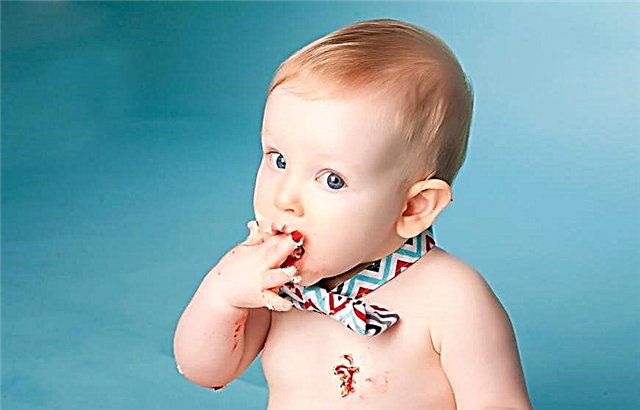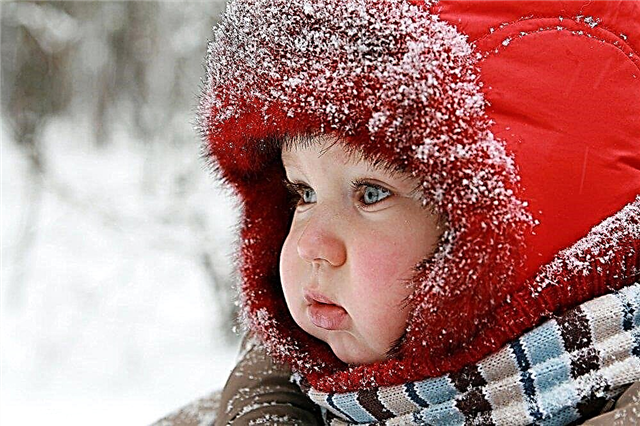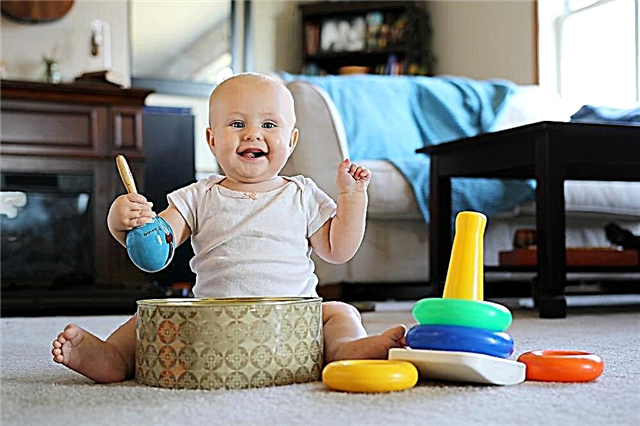
Plasticine is a material for children's development, which must be presented in every home. At the same time, today the variety of substances called plasticine is large enough to confuse parents, because it is not easy to immediately determine which one is better to choose. Recently, wax plasticine has been increasingly recommended for young children, but you should not blindly follow all the recommendations, so let's try to figure out what it is and why it is considered useful.

What it is?
Wax plasticine is a kind of classic plasticine, but it is made on a wax basis. This means that we are not talking about some completely new materials that have nothing in common with plasticine, but still bear this name; before us is the same classic plasticine, only with a significant addition of wax.
Consequently, all basic properties repeat those of classical plasticine. This is a typical material for modeling, designed, to a greater extent, not for durable storage of finished crafts, but for the maximum simplicity of their manufacture, which is very important for those kids who are just taking their first steps in this type of creativity.


This is a great reusable option that contains few or no harmful additives.
Benefits for the child
Modeling as a whole is comprehensively useful for young children, and with wax clay it turns out to be even more necessary for development. First of all, she perfectly trains fine motor skills. Wax plasticine is distinguished by increased softness, so you cannot pump up muscles on it, but it was not created for this either - on the contrary, due to its pliability, it does not push the child away from the process, making the task easy and fun. Working with him is not an exercise for strength, but for dexterity of fingers, which so need training.
Modeling is very useful for better awareness of the world around you. Any even relatively complex work is molded from the component parts that gives the child a general idea of the whole and the particular. Thinking of ways to design such composite crafts develops engineering thinking - the child learns to solve complex problems, breaking them down into several simpler steps.


Spatial imagination and even simple numeracy skills are also developed. Wax plasticine can be used for the creativity of children, starting from one year old, so even such simple skills may not yet be available for them, having appeared precisely in the process of modeling.
There is also a psychological moment due to which it is modeling is the best kind of creativity for children. Here, any mistake in the process of doing the work can be easily corrected, there is no need to start from the very beginning, and the general softness of the wax plasticine only helps to continue learning without giving up.

What is different from the usual?
Many parents are misled by the fact that wax plasticine is just a kind of classic - supposedly, why then buy it? In fact, there is a difference, and a very tangible one. Perhaps some of the best examples of ordinary plasticine outperform the mediocre waxy, but on average wax-based material turns out to be much better in a number of parameters, including:
- Ease of formation... The wax mass is much softer, which greatly facilitates the task for the smallest children. Classic material requires preliminary warm-up, sometimes the child's efforts are not enough for this, and then the help of adults is needed, but wax plasticine does not require warm-up at all and lends itself to the influence of the weakest children's hands.
- High stickiness... Due to the hardness of classical plasticine, parts made from it often have to be squeezed hard enough so that they stick together. Wax-based parts “grip” much better, making it easier to create complex crafts.


- Increased brightness... If we talk about the classic plasticine of most domestic manufacturers, then in the sets, despite the large number of declared colors, it is almost impossible to find truly bright shades. On average, wax products are slightly brighter, and this can become one of the main factors stimulating children's interest in modeling.
- Caring for the health of the child. The very fact that the basis of the mass is ordinary natural wax suggests that the composition of the mixture is predominantly natural. This does not mean that wax plasticine is completely safe and definitely does not contain any harmful additives, because manufacturers are not always conscientious, but in the case of classic plasticine, you often do not know at all what it is made of.

- Odorless... Smell as a phenomenon is a sign that a material or substance emits certain vapors that are not always harmless. Wax plasticine practically does not smell at all, which indicates its chemical neutrality. It is non-toxic and is recommended even for those children who are prone to allergic reactions.
- Cost. If we compare it with the classic domestic plasticine, then the wax mass costs approximately comparable, that is, it is financially no less profitable. If you try to compare it with imported products, it turns out that the promoted foreign brands offer their goods much more expensive, which once again pushes you to buy a mass for modeling made on a wax basis.


Kinds
Although wax plasticine itself is already a subspecies of the classic, it can also be divided into more specific subspecies. True, the division here is already rather arbitrary, and a person who does not deal with sculpting on a regular basis may not even notice any difference.
First of all, simple wax plasticine is always very soft, because that is why it suits babies well. In this case, the content of wax in the mixture and the exact composition of the wax base can be different, which directly affects the softness of the material. The softer options are good in cases when the child is still very young, and it is quite difficult for him to knead even very soft material.

The harder varieties of wax plasticine are slightly better suited for long-term storage of crafts, although in general this material is still softer than the same classics, and does not differ in high durability.
Like almost any classic plasticine, the wax mass for modeling does not glow in the dark, but there is also a fluorescent version, which forms a slight glow in a darkened room. Thanks to this, crafts made from it look much more interesting and unusual, which additionally attracts kids with a certain fabulousness of the result obtained.
A good example of wax plasticine is the set "Premium" from the famous manufacturer "Ray" - if a similar material from any other manufacturer has similar properties, then it is worth buying.


Composition
For each individual manufacturer, the approach to the composition of the components of the wax plasticine may differ somewhat, which affects the properties of the resulting material, but still, the main groups of ingredients are always approximately the same.
The main component of wax plasticine is wax base. It uses not only natural beeswax, but also related materials such as paraffin and stearin. Most often, manufacturers do not choose one thing, but mix these components in a certain proportion, which is often more or less close to three equal parts.
Such a formulation, for all its plasticity, can still be hard enough to successfully model figurines with a long shelf life, while wax clay should be incredibly soft, designed for the needs of even yearlings. This means that you need to add plasticizers to the composition, which can be very different. It is very important that this component is natural and does not evaporate in the open air, otherwise, instead of reusable wax plasticine, a solidifying mass will turn out.
The third required component is dyes, because it is important for children that their crafts have aesthetic appeal. It is dyes that are the main risk group, since natural substances usually look rather faded, and manufacturers, in pursuit of a marketable appearance, may include synthetics with increased brightness in the composition.
Sometimes it is easier to buy less bright plasticine than to risk the health of the baby, and if the choice fell on colorful material, it is worthwhile to first figure out how the manufacturer managed to achieve such a result.


Number of colors
Wax plasticine, like most other varieties of domestic classical plasticine, is most often sold large multi-colored sets of 8-24 shades. Moreover, any number of colors in a set is justified in its own way.
In particular, if the child is really still very young and is at that stage of learning to sculpt when he is just rolling balls and sausages, there is no point in buying him a whole palette - a rather “poor” set is enough, if only the colors there are bright enough.
And vice versa, if the kid has already achieved some success and creates rather complex crafts, you need to take a set with at least 16-18 flowers. In theory, of course, the desired shade can be obtained by mixing the available colors in the correct proportions, but this task may be too difficult for a small one.
On average, given the target audience of wax plasticine, sets of 12 colors are the most popular. They are relatively inexpensive and at the same time provide a fairly wide selection of any desired shades.


Popular manufacturers and reviews
Unusually, mainly domestic manufacturers are engaged in the production of wax plasticine - there is practically no import of such goods. Of the Russian companies involved in the production of this children's material, the Yaroslavl Chemical Plant won the greatest respect of consumers. "Ray", for several decades providing Russian children with quality paints and plasticine. This brand is considered one of the pioneers in the production of wax plasticine, and its products are rightly considered classics in the industry. The "Fantasy" set from this company will be an endless source of inspiration for children, because it contains half a kilo of material in 24 different shades.
In Russia and in the post-Soviet space, wax plasticine is also widespread. "Gamma" Ukrainian production.


In the next video, you will find a review of the "Bee" wax plasticine.



